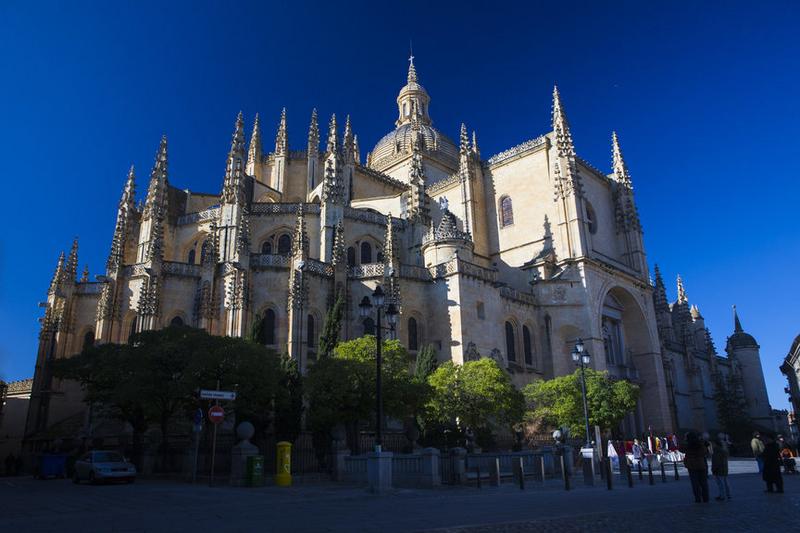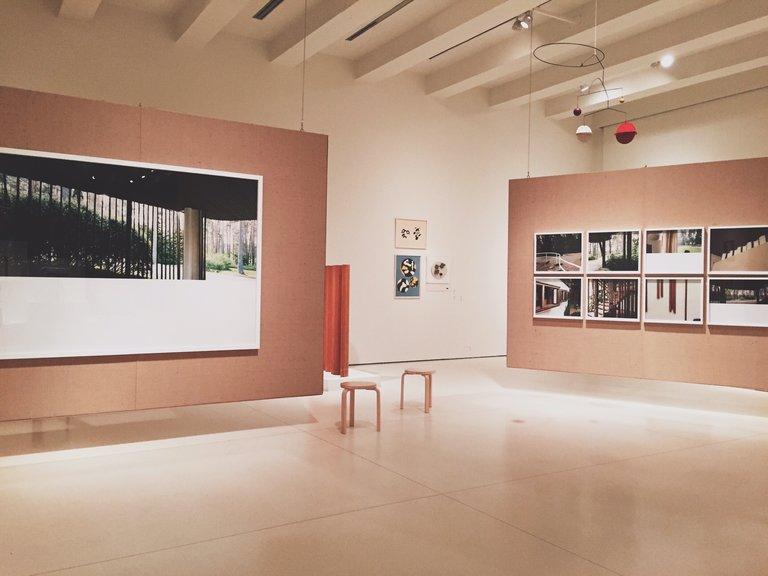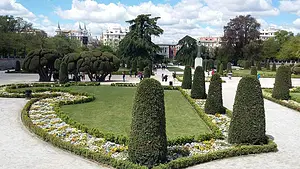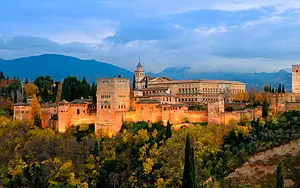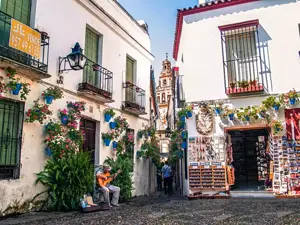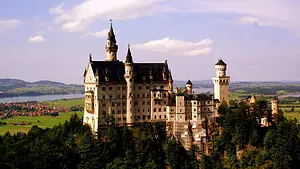8-day tour of Madrid and its surrounding towns
5 cities |
25 attraction(s) |
total distance 37
km
 TIPS
TIPS
Day1
Day2
Day3
Day4
Day5
Day6
Day7
Day8
Day1: Madrid
3 attraction(s) ·
4 km
1
The Prado Museum is one of the best museums in the world and is one of the most visited attractions in Madrid. It houses the finest works of Spanish art from the 16th to the 19th century, including works by Velázquez, Goya, and Greco, as well as a large collection of works by foreign Renaissance painters such as Tiziano from the Venetian school, Rubens from the German Baroque school, and Hieronymus Bosch from the Dutch Surrealist movement. The museum currently has a total collection of 27,509 artworks, including 7,825 oil paintings, which is quite impressive.
Unlike other large European museums like the Louvre in Paris and the National Gallery in London, which collect works from various eras and different artistic styles, the Prado Museum initially received donations of artworks from the royal family who were art enthusiasts, so the styles are more similar. The museum was commissioned to be built by King Carlos III in 1786 and opened to the public in 1819. Famous artists such as Monet, Renoir, Lautrec, Picasso, Matisse, and Dali have visited the museum and have been influenced by its painting styles.
4
km
3
Plaza Mayor, also known as Mayor Square, is the central square of the Spanish capital Madrid. It is located near the Puerta del Sol square and was built during the Habsburg dynasty. It has a rectangular shape, measuring 129 meters long and 94 meters wide, and is surrounded by three-story residential buildings with 237 balconies facing the square. It has a total of 9 entrances. The main building of Plaza Mayor is Casa de la Panadería (House of the Bakery), which serves municipal and cultural functions and is adorned with murals on its exterior walls.
Day2: Segovia
3 attraction(s) ·
3 km
1
The Roman Aqueduct of Segovia was built during the time of the Roman emperor Trajan (53-117 AD), and it is still intact. The aqueduct is made of solid granite blocks without mortar and is exceptionally sturdy. It is 813 meters long, consisting of 148 arches, and stands 30.25 meters above the ground. The original purpose of the aqueduct was to bring water from the Frio River, located 18 kilometers away, into the city for drinking. The ancient Roman engineers created a canal with an average slope of 1% to achieve this. The only natural obstacle they faced was crossing the Clamor River. To overcome this ravine and reach the solid rock layers where the city is situated, they had to use large blocks of bricks, divided into four sections. The water channel is supported by 128 pillars and consists of a double-layered arch structure. At the top of the water channel is a canal that still carries water today, with an initial cross-section of 30x30cm. In the late 15th century, the bishop ordered its renovation, and it has been maintained and used ever since. In 1929-1930, the top was rebuilt with cement, causing significant damage to the original structure. Recently, artifacts unearthed from the foundations of the aqueduct seem to confirm that it was built around 50 AD. This impressive double-arched structure is embedded in the magnificent ancient city and has become a symbol of Segovia's pride.
3
km
2
Segovia Cathedral was constructed on the highest point of the ancient city of Segovia. It was rebuilt by architect Juan Gil de Hontanon in 1525 on the site of the original Romanesque church (built in 1520) which was destroyed by fire. The new cathedral also incorporated some remnants of the old church. It was officially inaugurated in 1678. The cathedral houses a sculpture of an altar called "The Mercy," created by Juan de Juni in 1571.
1
km
3
The Alcázar Castle is located at the confluence of the Eresma and Clamores rivers, at the western end of Segovia, Spain. The castle's strategic location provided excellent views and had a moat over 10 meters deep at the entrance to defend against enemies. The fortress has a recorded history dating back to the 12th century. It was built on a rocky outcrop and served as a military stronghold and residence of Alfonso VIII. Queen Isabella of Spain was crowned here. In 1764, King Charles II established a royal artillery academy in the castle. The entire building was destroyed by a fire in 1862 and the current beautiful castle was rebuilt on the original site. The castle showcases traces of Moorish culture, with intricate decorations often seen in many rooms. After centuries of renovations, the castle now stands as a fusion of palace and military defense architecture. Highlights include the Sala de las Pinas, with a ceiling adorned with 392 stalactites shaped like pineapples, and the Sala de Reyes, where stone columns feature a three-dimensional carving depicting 52 kings in the struggle to reconquer Spain. The castle served as inspiration for Disney's castles in the films "Snow White" and "Sleeping Beauty."
Day3: Toledo
5 attraction(s) ·
8 km
1
Built in the 13th century, there are two defensive towers standing at the bridgehead, which belong to the Gothic style. The Monastery of San Juan of the Catholic Kings, a Gothic-style monastery, is a masterpiece by Juan Guas, commissioned by the Catholic Kings. The outstanding features of this monastery are its elaborate decorations and exquisite sculpture art on the cloisters.
2
km
2
Toledo Cathedral, one of the largest cathedrals in the world, is a masterpiece of Gothic art and a prime historical witness. It is a medieval city that still retains its charm. The cathedral was the largest in the Christian diocese of Spain at the time and is the second largest cathedral in Spain. Construction began in 1247 and was completed in 1493. It adopted the rarely used French Gothic architectural style in Spanish churches at the time. The Spanish Gothic art style is fully reflected in the cathedral's architecture. It imitated the Bourges Cathedral in France, and the consequence of the plan with five central aisles was to cover the previous mosque with the cathedral and the sahn with the monastery. It also incorporates some features of the Mudéjar style, mainly reflected in the multi-lobed arches of the cloister. The marvelous interaction of light and the vaulted ceiling is a more remarkable aspect. The building material, white stone, comes from Olihuelas near Toledo.
2
km
3
Also belonging to the Renaissance style, the early work was completed by Herrera, and later modified and embellished by Jorge Manuel Theotocópuli, son of the painter Greco. The two towers of the Town Hall are accompanied by Baroque-style spires.
2
km
4
This stone castle, built by the Romans in the 3rd century, is located at the highest point of the city of Torres. It was recovered by Alfonso VI. Today, the castle houses the Castilla-La Mancha Regional Library, the Spanish Military Museum, etc.
3
km
5
The Sun Gate is a must-see attraction in Toledo. It was built in the 13th century and has a typical Arab style - tall, magnificent, and majestic. There are two explanations for its name: one is that there are sun and moon patterns on the gate; the other is that during the reign of Alfonso X, the gate was located on the prime meridian, and sunlight shines on it from sunrise to sunset.
Day4: Avila
3 attraction(s) ·
2 km
1
The Walls of Ávila are a magnificent 12th-century fortress spanning over 1 kilometer. Divided by a cathedral into two parts, the wall features 2500 small towers and 88 tall towers, making it one of the best-preserved walls in Spain.
1
km
2
The Ávila Cathedral is both a church and a fortress with a rear hall, embedded in the eastern city wall. It is the first Gothic cathedral in Spain. It boasts walnut choir seats and a long, narrow atrium ceiling that gives it a more solemn appearance.
1
km
3
The Convent of Santa Teresa was built in 1636 on the site of the former residence of Saint Teresa, who was born here in 1515. It is the birthplace of 16th-century mysticism and asceticism. It is now a chapel, with an adjacent orchard, relics exhibition room, and a small museum.
Day5: Madrid
2 attraction(s) ·
2 km
1
Aranjuez is where the Catholic Kings Isabel and Fernando "fled". In the 18th century, King Felipe V of the Bourbon dynasty moved the center of the court to Aranjuez. Carlos III and IV respectively built the two wings of the palace, the "Prince's Garden," and the "Farmhouse."
The front of the Royal Palace of Aranjuez is full of Oriental charm, and the Chinese Hall and Arab Hall are the main attractions.
The gardens of Aranjuez are uniquely designed. The flowers, statues, and fountains in the island garden complement each other. The Prince's Garden reflects the Spanish king's dream of connecting central Spain with the sea. There is also a Faroese Museum in the Prince's Garden.
2
km
2
The palace is one of the residences of the Spanish royal family and is located on the banks of the Tagus River. It was designed by the same architect who designed the Escorial Monastery and was built during the reign of King Philip II. Almost all rooms in the palace are open for visitation, and the most famous one is the "Chinese Room," which is one of the queen's reception rooms and is filled with porcelain and sculptures.
Day6: Cuenca
3 attraction(s) ·
5 km
1
The Hanging Houses of Cuenca were built in the 15th century. They are located on the top of a cliff, with balconies extending outside the gorge, giving them a precarious appearance. The Hanging Houses are a group of residential buildings in the eastern part of the old town of Cuenca, Spain, built along the banks of the Huécar River. The most famous one is a three-story building with a suspended wooden balcony. It is now the Museum of Spanish Abstract Art, which regularly holds various exhibitions.
3
km
2
Cuenca Cathedral features a Norman Gothic facade, showcasing the essence of Spanish architectural art, but it appears unfinished.
2
km
3
Located in the alley next to the Quanca Cathedral, the hanging house is an exhibition that introduces the history of the city of Quanca, including a large number of Roman artifacts.
Day7: Madrid
3 attraction(s) ·
8 km
1
Museo Nacional Centro de Arte Reina Sofía
The Queen Sofia Arts Center houses nearly 18,000 art pieces, ranging from the 19th century to the present. The most important works come from 20th-century Spanish painters such as Picasso, Dali, and Miro. The most worth-visiting piece is Picasso's "Guernica," a massive painting measuring approximately 8 meters long and 4 meters wide. Created in 1937, it depicts the scene of the small Basque town of Guernica, which was destroyed by the German and Italian air forces during the Spanish Civil War. It is recommended to allocate at least 2 hours for the visit.
2
km
2
The Museum of Contemporary Art, Madrid, is adjacent to the Prado Museum, the Thyssen-Bornemisza Museum, and other important museums that house classical artworks. The museum cost $94 million and was funded by the La Caixa Foundation.
Designed by Swiss architects Herzog & de Meuron, the museum is a transformation of a century-old power station. The preservation of the power station's historical remains is seen as a successful example of urban preservation. The power station itself is considered a significant industrial heritage.
The designers preserved the 19th-century brick walls, but added underground passages to allow visitors to bypass the walls and enter the building. The underground exhibition area has two floors, and the highest point of the old building includes two iron-like attic structures.
The most impressive feature is the 24-meter high vertical garden created by the architects. The walls are covered with green plants, all facing the sky. To see how they grow, you'll need to visit in person. The new museum focuses on debates, educational programs, and touring exhibitions. The inaugural exhibition featured 37 works by contemporary artists such as Cindy Sherman, Cornelia Parker, and Richard Long.
6
km
3
El Estadio Santiago Bernabéu
Visiting Real Madrid's home stadium, Estadio Santiago Bernabéu, is an absolute must for fans. If you happen to be here during the season, congratulations, you can buy a ticket and admire Real Madrid's exceptional skills. Bernabéu has a kind of magic that drives people crazy. Once you step inside, you will be filled with excitement. If you don't catch a match, don't worry, you can still tour the stadium, including visiting the trophy exhibition room, the president's office, the press center, the locker room, the player tunnel, and the bench where players sit on the sidelines.
Day8: Madrid
3 attraction(s) ·
8 km
1
Parque del Buen Retiro
Retiro Park, located in the center of Madrid, occupies an area of 118 hectares and has nearly 15,000 trees. It is a popular place for both travelers and locals to enjoy leisure time. The park was built in 1630 as a vacation spot for the king and has since been opened to the public. Notable attractions in the park include the Statue Avenue, Puerta de España (Gate of Spain), Rose Garden, Monumento a Alfonso XII (Monument to Alfonso XII), and Palacio de Cristal (Crystal Palace).
5
km
2
The square originated as a city gate in 15th century Madrid, named Puerta del Sol because it faced the rising sun. The oldest building on the square is the former post office from the 18th century, which is now the Madrid Regional Government building. It was once the headquarters of national security during the Franco era, and the bottom half of the windows were where political prisoners opposing Franco's rule were held. Another important site on the square is the statue of Carlos III, a king of Spain during the Bourbon dynasty, who was born in Madrid and known for his efforts in developing public infrastructure in the city. The other attraction is the symbol of Madrid, the bear and the strawberry tree. The bear represents King Alfonso XI of Castile, who hunted a bear on the surrounding mountains, and the strawberry tree represents the abundance of wild strawberry trees in the area.
3
km
3
Gran Vía is a luxurious and upscale shopping street in the center of Madrid, the capital of Spain. It stretches from Alcalá Street in the east to Plaza de España in the west. It is one of the city's most important shopping areas, with numerous hotels and large cinemas, and is known for its large buildings. Most of the theaters have now been replaced by shopping malls. In the mid-19th century, urban planners in Madrid decided to build a new thoroughfare connecting Alcalá Street and Plaza de España. This project involved the demolition of many buildings in the city center and was called the "axe on the map." After several decades of planning, construction had not yet begun, so the media sarcastically referred to it as the "Great Road" (Gran Vía). Finally, it was approved in 1904 and construction began two years later. The last section of the street was completed in 1929.




